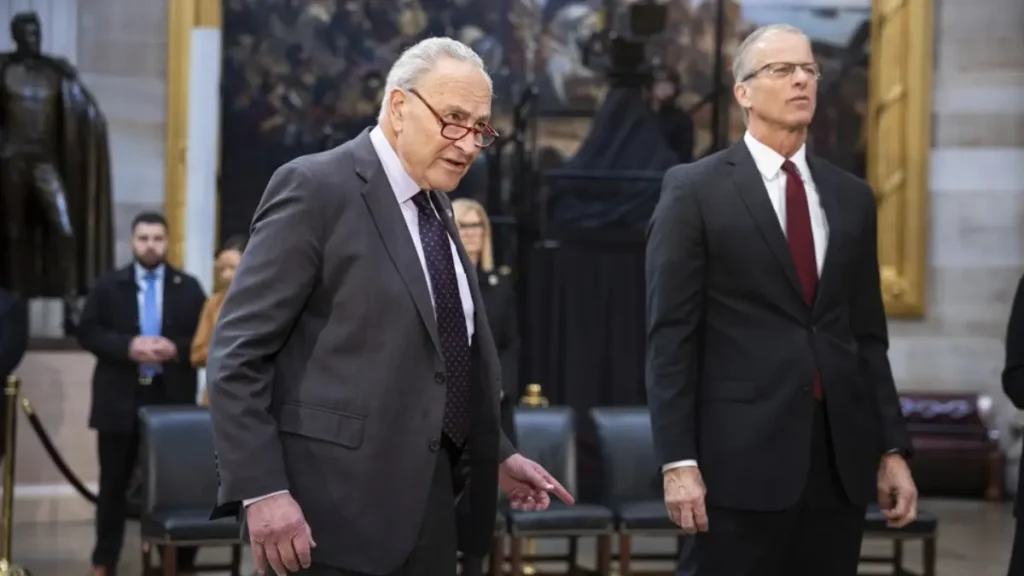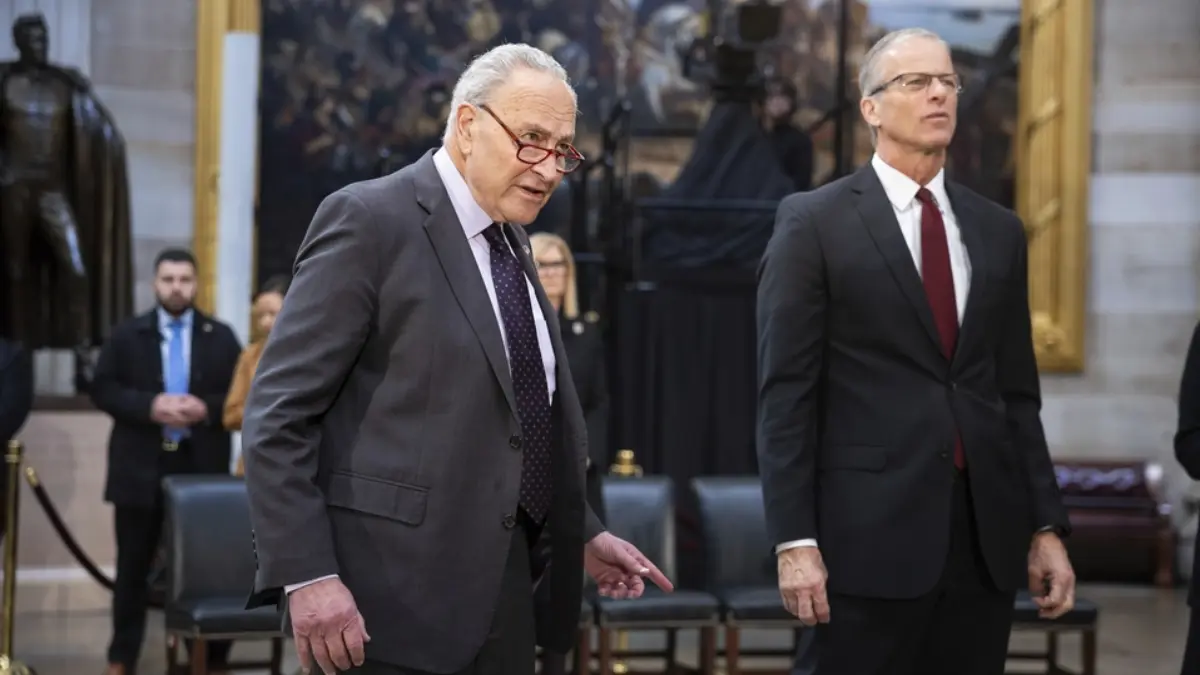Explore the Government Funding Crisis 2025, its causes, political battles, impacts on federal workers, health care, and the economy, plus what it means for upcoming elections.
Government Funding Crisis 2025: Causes, Impacts, and Political Fallout

The Government Funding Crisis of 2025 has once again thrown Washington, D.C. into chaos. Both Democrats and Republicans are locked in a fierce battle over federal spending, health care subsidies, and broader political priorities. The result is a shutdown that has left hundreds of thousands of federal employees furloughed, raised questions about America’s economic stability, and set the stage for the 2026 midterm elections.
This article takes an in-depth look at the Government Funding Crisis, explaining why it happened, who’s to blame, and how it’s affecting everyday Americans.
Understanding the Government Funding Crisis 2025
A Government Funding Crisis 2025 occurs when Congress cannot agree on a budget or short-term spending bill. Without new funding legislation, the federal government is legally required to shut down non-essential operations.
In 2025, the crisis emerged due to disagreements over Affordable Care Act (ACA) subsidies and other provisions tied to the One Big Beautiful Bill Act, passed earlier in the year. Democrats insisted on extending expiring health care subsidies, while Republicans opposed tying them to government funding, calling it a “hostage tactic.”
Key Players in the Government Funding Crisis 2025
| Political Figure | Role in the Crisis | Position |
|---|---|---|
| Chuck Schumer | Senate Minority Leader | Demanding ACA subsidies extension before approving funding |
| John Thune | Senate Majority Leader | Opposes linking subsidies to funding, calls for separate talks |
| Donald Trump | Former President | Amplifying Republican messaging, attacking Democrats |
| Ted Cruz | GOP Senator | Claims Democrats want “free health care for undocumented immigrants” |
| Jon Ossoff | Democratic Senator | Voted against stopgap bill, facing GOP attacks in reelection bid |
The Government Funding Crisis 2025 is not just a policy battle; it’s also a political chess match with both parties eyeing voter sentiment ahead of the 2026 midterms.
Impacts of the Government Funding Crisis
The effects of the Government Funding Crisis ripple across multiple sectors:
1. Federal Workers and Military Families
Over 750,000 employees are furloughed daily, while military families face delays in paychecks. Republicans are using this to accuse Democrats of “grinding America to a halt.”
2. Health Care Costs
If ACA subsidies expire, millions could see higher premiums. Democrats argue this makes the Government Funding Crisis a fight to protect working families.
3. Public Services
Shutdown impacts include:
- Closure of Head Start programs in some states
- Reduced access to Medicaid-funded clinics
- Delays in processing federal benefits
Public Opinion on the Government Funding Crisis 2025
Polling shows mixed reactions:
| Survey | Result |
|---|---|
| Morning Consult Poll | More voters blame Republicans than Democrats |
| NYT/Siena Poll | Nearly 2/3 of voters (including 59% of independents) say Democrats shouldn’t shut down government over ACA subsidies |
| Trump Campaign Pollster | Warns Republicans risk backlash over health care cuts |
This division shows that the Government Funding Crisis could become a decisive campaign issue in 2026.
Democrats’ Strategy
Democrats are using the Government Funding Crisis to highlight rising health care costs. Their campaign ads target Republicans for opposing affordable health care and voting to raise premiums.
Key Democratic talking points:
- Protecting ACA subsidies
- Preventing Medicaid cuts
- Framing Republicans as responsible for higher health care costs
Republicans’ Strategy
Republicans, on the other hand, are framing the Government Funding Crisis as unnecessary and reckless. Their strategy includes:
- Highlighting delayed paychecks for federal workers and military families
- Framing Democrats as prioritizing “free health care for undocumented immigrants”
- Running ads against vulnerable Democrats like Jon Ossoff
Economic Fallout of the Government Funding Crisis
The Congressional Budget Office estimates that the shutdown caused by the Government Funding Crisis could cost the U.S. economy billions of dollars if it extends beyond two weeks. The ripple effects include:
- Slower GDP growth
- Business uncertainty
- Strain on small contractors relying on federal projects
Historical Context
This is not the first Government Funding Crisis. Past shutdowns, such as those in 2013 and 2018-2019, also stemmed from partisan standoffs. Historically, the public tends to blame the party perceived as being more extreme, making the current standoff risky for both sides.
Possible Resolutions
To end the Government Funding Crisis, Congress has several options:
- Pass a short-term continuing resolution (CR) without ACA provisions (Republican preference).
- Pass a CR with ACA subsidies extension (Democratic preference).
- Negotiate a bipartisan long-term spending package.
The political feasibility of each option depends on voter pressure and internal party dynamics.
FAQs About the Government Funding Crisis
Q1: What is the Government Funding Crisis?
The Government Funding Crisis refers to the 2025 shutdown caused by Congress failing to pass a funding bill due to disputes over health care subsidies.
Q2: Who is responsible for the Government Funding Crisis?
Both parties blame each other: Democrats want ACA subsidies tied to funding, while Republicans oppose this strategy.
Q3: How does the Government Funding Crisis affect me?
It can lead to delays in federal services, higher health care premiums, and paycheck interruptions for federal employees.
Q4: How long will the Government Funding Crisis last?
The duration depends on negotiations in Congress. Past shutdowns have lasted from a few days to over a month.
Q5: Could the Government Funding Crisis affect the 2026 elections?
Yes, voter perception of the shutdown could influence House and Senate races.
Conclusion
The Government Funding Crisis of 2025 is more than just a budget dispute — it’s a clash of values, priorities, and election strategies. With health care costs, federal workers, and the economy at stake, the resolution of this crisis will have long-lasting consequences. Whether voters blame Democrats or Republicans may well determine the balance of power in the 2026 midterms.

